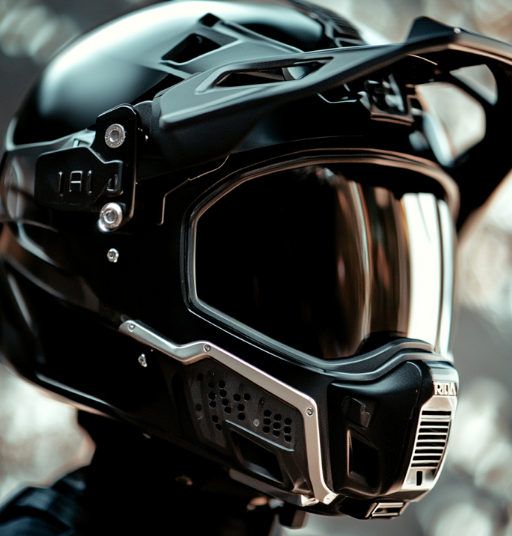Are you an adventure enthusiast looking for the ideal helmet camera to capture your thrilling exploits? Whether you’re scaling mountains, biking through rugged trails, or enjoying high-speed water sports, a helmet camera can preserve those moments with remarkable clarity. However, choosing the perfect one can seem overwhelming due to the variety of features and specifications available.
Understanding Helmet Cameras
What is a Helmet Camera?
A helmet camera, often referred to as an action camera, is a compact, durable device designed to be mounted on a helmet or other gear. These cameras are built to withstand extreme conditions and capture high-quality video and photos during various activities.
Why Use a Helmet Camera?
Helmet cameras serve multiple purposes. They document your adventures, provide a firsthand perspective of your experiences, and even enhance safety by recording mishaps or notable occurrences. They are popular among extreme sports enthusiasts, motorcyclists, cyclists, and anyone who loves the great outdoors.
Key Features to Consider
Video Quality
One of the most critical aspects of a helmet camera is its video quality. Here’s what you need to know:
| Resolution | Description |
|---|---|
| 4K Ultra HD | Offers stunning clarity and is perfect for professional use or high-detail recordings. |
| 1080p Full HD | Provides excellent video quality and is ideal for most users and activities. |
| 720p HD | Suitable for casual users and shorter recording times. |
The choice depends on your needs. If you want the highest detail, 4K is the way to go. For everyday adventures, 1080p suffices.
Frame Rate
The frame rate, measured in frames per second (fps), affects the smoothness of your videos. Higher frame rates are beneficial for fast-paced activities. Common frame rates include:
- 30 fps: Standard for most applications.
- 60 fps: Better for smoother playback in action-packed scenarios.
- 120 fps and higher: Ideal for slow-motion footage and very fast activities.
Field of View (FOV)
The field of view determines how much of the scene the camera captures. Wide-angle lenses are standard in helmet cameras to provide an immersive perspective. Common FOV options are:
- Wide: Captures the broadest area, great for action shots.
- Medium: Offers a balanced view without too much distortion.
- Narrow: Focuses on the subject, reducing background distractions.
Durability and Build Quality
Waterproofing
Waterproofing is crucial if your adventures include water sports or rainy weather. Look for these ratings:
- IPX7: Can be submerged up to 1 meter for 30 minutes.
- IPX8: Suitable for continuous submersion deeper than 1 meter.
Shock Resistance
The camera should withstand bumps, drops, and rough handling. Check that the build materials are robust and have shock-absorption features.
Battery Life
Factors Affecting Battery Life
Battery life varies depending on usage and camera settings. High resolutions and frame rates consume more power. Consider cameras with:
- Replaceable batteries: Allows you to carry spares for extended recording.
- External battery packs: Useful for long-duration shoots.
Battery Life Expectations
On average, helmet cameras offer 1-3 hours of recording time. Evaluate the battery life based on your expected activity duration.
Charging Options
Look for cameras that support multiple charging options, like USB-C ports and rapid charging capabilities.
Mounting Options
Helmet Mounts
Helmet mounts are designed to attach the camera securely to your helmet. Common types include:
- Top mounts: Positioned at the top of the helmet for a bird’s-eye view.
- Side mounts: Attached to the side of the helmet for a different angle.
Other Mounting Accessories
Additional accessories can expand the camera’s versatility. Some examples are:
- Chest mounts: Provides a lower angle view.
- Handlebar mounts: For cyclists and motorcyclists.
Connectivity and Storage
Wireless Features
Modern helmet cameras often include wireless connectivity for ease of use. These may include:
- Wi-Fi: Allows for remote control and previewing footage on a smartphone.
- Bluetooth: Facilitates quick file transfers and accessory connections.
Storage Solutions
Consider the storage options that suit your needs:
- Internal storage: Convenient but often limited.
- MicroSD cards: Common and versatile, with sizes ranging from 32GB to 256GB and beyond.
Cloud Storage
Some cameras offer cloud storage options for backing up your footage. This is useful for keeping your data secure and accessible from anywhere.
Additional Features
Image Stabilization
Electronic or optical image stabilization helps produce smooth videos, especially during bumpy activities. This feature is particularly useful for high-motion recording.
GPS Integration
GPS functionality logs your location data with your video, adding context to your adventure. It’s great for tracking routes and adding mapping overlays to your footage.
Voice Control
Voice control allows you to operate the camera hands-free, a handy feature when your hands are occupied with the activity at hand.
Touchscreen
A touchscreen offers an intuitive way to navigate settings and review footage directly on the camera. It adds convenience, especially in the field.
Leading Helmet Camera Brands
GoPro
GoPro is a well-known name in the action camera industry, famous for its durable and high-quality cameras. Their models range from the entry-level HERO series to the premium HERO Max.
DJI
DJI, primarily known for drones, also produces impressive action cameras. The DJI Osmo Action series is noted for its excellent image stabilization and robust build.
Garmin
Garmin offers action cameras with advanced features like built-in sensors and GPS. The Garmin VIRB series is popular among outdoor enthusiasts.
Sony
Sony’s action cameras, like the FDR-X3000, offer impressive image quality and advanced stabilization. They are a solid choice for those seeking high-end performance.
Comparing Popular Helmet Cameras
Here’s a quick comparison of some top models:
| Feature | GoPro HERO9 Black | DJI Osmo Action | Garmin VIRB Ultra 30 | Sony FDR-X3000 |
|---|---|---|---|---|
| Resolution | 5K, 4K, 1080p | 4K, 1080p | 4K, 1080p | 4K, 1080p |
| Frame Rate | Up to 240 fps | Up to 240 fps | Up to 120 fps | Up to 120 fps |
| Waterproofing | 10m | 11m | Waterproof case needed | Waterproof case needed |
| Image Stabilization | HyperSmooth 3.0 | RockSteady | Electronic | Optical SteadyShot |
| Battery Life (Approx.) | 2.5 hours | 2 hours | 1.5 hours | 2.5 hours |
| GPS | Yes | No | Yes | No |
| Voice Control | Yes | Yes | Yes | No |
Budget Considerations
Entry-Level Cameras
For those on a budget, entry-level models offer decent quality at an affordable price. These are perfect for beginners or occasional users.
Mid-Range Cameras
Mid-range cameras balance cost and features, providing better video quality and additional functionalities without breaking the bank.
High-End Cameras
High-end models are for serious enthusiasts and professionals. They offer the best video quality, extensive features, and superior durability.
Tips for Using Your Helmet Camera
Optimal Settings
Adjust settings based on your activity. For example, use higher frame rates for fast sports and lower resolution to save storage and battery life.
Mounting Techniques
Secure the camera firmly and experiment with different angles to find the most engaging viewpoint for your audience.
Care and Maintenance
Regularly clean your camera and mounts, especially after use in harsh conditions. Store it in a protective case to prolong its lifespan.
Conclusion
Choosing the best helmet camera for your adventures involves analyzing various features and understanding your specific needs. By focusing on video quality, durability, battery life, and additional functionalities, you can find the perfect camera to capture every thrilling moment. Whether you opt for a GoPro, DJI, Garmin, or Sony, you are sure to find a reliable companion for your expeditions.


